Special Feature: Products Sally Recommends
My Ten Favorites
When beer novices find out that I make my living drinking and writing about beer, usually the first question out of their mouths is "What's your favorite beer?"
Of course, they don't realize what a ludicrous question that is, considering the thousands -- perhaps hundreds of thousands -- of beers made throughout the world. My favorite response and one my husband likes to use is, "The beer in my hand."
So here I will attempt to tell you what my 10 favorite beers are and make a case for each one. But there is one caveat: they weren't my 10 favorite beers last week and most assuredly won't be my 10 favorites next week.
I would not and could not list them in any order resembling my most to least favorite because that most certainly changes day to day, even sip to sip, depending on my mood, my whim, the time of day, the season, condition of each beer, price of each beer (beer always tastes better when it's free), the surrounding atmosphere and fellow imbibers, weather conditions and a myriad of other variables.
![]()
Here they are in no particular order:
Bigfoot Barleywine Style Ale
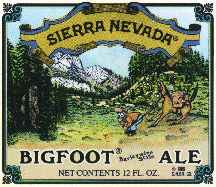 Sierra Nevada Brewing Co., Chico, California
Sierra Nevada Brewing Co., Chico, California
It seems it would be difficult to live up to an imaginative name like Bigfoot, but this perennial medal winner has few peers in its style category. All barleywines that are worth their weight are high in alcohol, and Bigfoot is no exception, weighing in at about 11 percent by volume. But its brute strength isn't its only asset. It has a vast depth of flavor with a complex aroma. When other barleywines are tasted side-by-side with it, they pale next to Bigfoot.
Often barleywines are cloyingly sweet, lacking complexity because there are insufficient hops to balance their heavy-handed grain bills. But not so with Bigfoot, whose conspicuous hop character is derived from adding assertive American hops during the boil in a process known as dry hopping, which is exposing aromatic hops to beer during the fermentation or conditioning stage.
The care with which Bigfoot is crafted and the four weeks of bottle conditioning at the brewery render a full-bodied, copper-colored beer with a fruity, herbal aroma and complex flavor of figs, hops and malt. Bigfoot is perilously potable in its silky texture and balance.
![]()
Rodenbach Grand Cru Belgian Red Ale
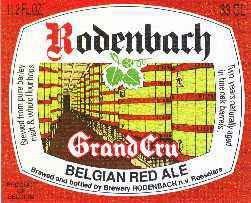 Brouwerij Rodenbach, Roeselare, West Flanders, Belgium
Brouwerij Rodenbach, Roeselare, West Flanders, Belgium
Often referred to as the "Burgandies of Belgium," the red ales of West Flanders are unique, and Rodenbach brews the quintessential examples of this style. The process of creating Rodenbach Grand Cru is quite extraordinary, rendering a tart, refreshing beer whose flavor may startle the uninitiated.
Rodenbach Grand Cru is created with a whopping 20 different strains of yeast and four malts, one of which imparts the reddish-brown color. But the extraordinary part comes following the brewing process when the beer matures for up to two years in massive uncoated oak vats. Shady yeast characters called lactobacilli and acetobacters, which have resided in the wood of the brewery for some 150 years, impart the distinctive sourness and acidity to the beer, while the wood, despite having far exceeded the century mark, continues to contribute to the beer's flavor. The aged ale that is bottled becomes Rodenboch Grand Cru, whereas the blended version of the "young" and "old" beers is known simply as Rodenbach.
Rodenboch Grand Cru is an assertive red ale with little hop character but rather a complex sweet-sour flavor. Some oakiness emerges with an inkling of iron on the front of the palate, followed by a thirst quenching finish.
![]()
Red Seal Ale
North Coast Brewing Co., Fort Bragg, California
Although you won't find Red Seal included in many world classic beer lists, I find it to be a delightful example of an American pale ale. What most intrigues me is its full, fruity, herbal aroma -- a promise fulfilled by its hoppy, dry flavor.
North Coast Brewing opened it doors in 1988 after company president and brewmaster Mark Ruedrich honed his skills at homebrewing, having already developed a taste for real ale while living in England. North Coast was launched with Red Seal Ale, Scrimshaw Pilsner and Old No. 38 Stout, which many beer experts do consider a world classic beer.
The rich, amber-colored Red Seal is the epitome of a great American pale ale that is well balanced, fresh and full of American hops. Although Sierra Nevada Pale Ale is the sweetheart of America's brewing community, I find Red Seal to be softer on the palate with less hop bitterness.
![]()
Oud Kriekenbier
Brouwerij Crombe, Zottegem, East Flanders, Belgium
I have always loved cherries, especially the tart cherries used to make cherry pie. Even as a tot, I used to tell my parents that my thumb was cherry-flavored and that that was why I sucked it. Now I'm more partial to sucking the suds of Oud Kriekenbier.
Oud Kriekenbier tastes like fresh cherry pie, and although I've only tasted it once, about a year ago, I still dream of its incredibly fresh, tart cherry flavor. Most kriek (cherry) beers begin with lambic-style or spontaneously fermented beer. The sour flavor of lambic beer is largely derived from exposure to wild yeasts and bacterias during spontaneous fermentation, but Oud Kriekenbier is a filtered pale ale that has been referemented with whole cherries for its refreshingly tart flavor. Indeed, it is reportedly the only kriek beer not based on lambic that is made with 100 percent whole cherries.
As a note of interest, the Crombe Brewery, a tiny brewery established in 1798 and still run by the same family, has the remnants of an old hop kiln on its premises.
![]()
CH'TI Blond Brasserie
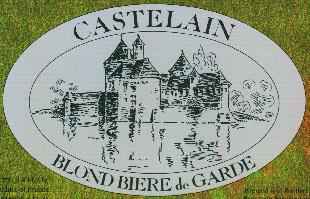
Castelain, Benifontaine, France
CH'TI, which is fermented with lager yeast, is a French style of beer dubbed biere de garde. Yves Castelain, the pioneering brewmaster and grandson of the founder of this brewery, is a powerful force behind the revival of bieres de garde in French Flanders. Castelain is brewing artisanal beers in a country where most beers are brewed by industrial-size brewers.
But CH'TI Blond, widely marketed in the United States simply as "Castelain," has more to offer than a rich brewing history. It is deep golden in color with earthy, malty, fruity notes and an unexpected hint of lemon tartness squeezed in for good measure -- and that's just the aroma. Although I don't find it to be exceptionally complex in flavor, it has a pleasant, lightly sweet palate reminiscent of chocolate chip cookie dough with a long, soft hop finish. It pairs particularly well with goat cheese.
![]()
Royal Oak Pale Ale
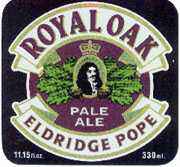 Eldridge Pope & Co., Dorchester, England
Eldridge Pope & Co., Dorchester, England
Although the brewing water (derived from the brewery's own well) used in Eldridge Pope ales is quite hard, the beers are notably very soft on the palate, which is probably imparted by the malts and multistrain yeast used in the brewing and fermenting stages.
The brewery was first started in the mid-1830s and is most renowned for brewing the world classic Thomas Hardy's Ale. Still, I'm fond of Royal Oak for its deep, copper-golden color with its rocky, sienna-colored head. The aroma and flavor of this English Pale Ale are softer than that of its American counterparts. It has an earthy, buttery bouquet (diacetyl typical of English-style ales) with a waft of English hops in the background. It has a smooth full body with a sweetish, malty flavor, a hint of sultanas and a clean hop bitterness in the finish. It is the benchmark example of an English-style ale.
![]()
Chimay Grand Reserve
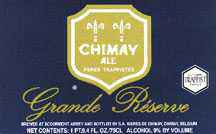 Abbaye de Notre-Dame de Scourmont, Forges-les-Chimay, Belgium
Abbaye de Notre-Dame de Scourmont, Forges-les-Chimay, Belgium
What can I say about Chimay Grand Reserve -- also known as Chimay Blue. On any given day it may be my all-time favorite. It is brewed at one of only six remaining Trappist breweries, which are all cloistered (closed to the public). Only a few privileged people, such as London-based beer expert Michael Jackson, have had the opportunity to visit with the monks and spend time in their brewery. Jackson has even been fortunate enough to spend the night at the monastery.
The brewery of Chimay, named after the small town nearby, is world renowned for brewing complex Trappist ales, and in my humble opinion, the Grand Reserve is the finest of the three it offers.
My fondest memory of drinking Chimay was one blustery day at a bed and breakfast on Amelia Island, Fla., which overlooked the rushing tide of the Atlantic ocean. It was my husband's and my fifth wedding anniversary, and he had surprised me by arranging to have a 150-centiliter, bordeaux-type bottle of Grand Reserve along with a colorful arrangement of fresh flowers awaiting our arrival. We had picked up a crusty loaf of sourdough bread, a wheel of strong European cheese, a couple of magazines and retured to the bed and breakfast with our treasures. We snuggled into the cushy common area encased in oceanfront windows and sipped, savored and scanned our afternoon away. It was a wonderfully warm and intimate moment for both of us with our Chimay.
Chimay Grand Reserve is a strong Belgian ale that is a deep russet color with a lively head and body. Its aromas and flavors are deeply complex, with high alcohol and bold character. It is bottle conditioned and benefits with aging for two years, as recommended by the monastery. It has yeasty, fruity esters derived from its high temperature fermentation. The flavor is spicy, fruity and malty with a lingering finish. Chimay Grand Reserve has been compared to Zinfandels and port wines.
![]()
Monk's Pale Ale
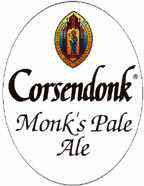
Corsendonk (Agnus Dei) Brasserie Du Bocq, Purnode, Belgium
Corsendonk was once a brewing abbey in Belgium. The present day brand carries the appellation of Abbey Ale because it is now brewed under license by a secular commercial brewery. Du Bocq Brewery, in the province of Namur, and its founding family The Keersmaekers carry a fine reputation as producers of respectable beers.
Corsendonk is brewed with all natural ingredients, and, even though the label says Pale Ale, it is brewed in the style of a Belgian Tripel, which is usually straw in color and light in body but high in alcohol. Corsendonk is bottle-conditioned and can be cellared like a fine wine. It becomes drier with age. It has a dry delicate character with perfumy, fruity and citrusy aromas. It is warm going down, due to its high alcohol content, but still offers a gentle balance of hops and malts on the palate. I find a graininess, coupled with yeastiness and clove character, amidst the complexity of flavors.
![]()
Celis White
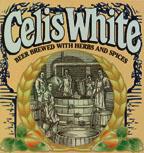 Celis Brewery, Austin, Texas
Celis Brewery, Austin, Texas
Celis White Beer is nearly as remarkable as the brewery and its namesake founder Pierre Celis. Celis, a dairy farmer in Belgium, single-handedly revived the Belgian witbier style some thirty years ago. After his brewery burnt to the ground in 1985, he turned to megabrewer Stella Artois and later Interbrew to help him rebuild. When he was ordered to take brewing shortcuts, he sold off the brewery and made a fresh beginning in Austin, Texas, of all places! The waters of Austin proved to be perfectly suited to his unique witbier, and when Celis began selling it in 1992, there were no American breweries producing the style. Now there are too many to count.
In 1995, Celis entered into an alliance with Miller Brewing Co., which now owns a portion of the brewery.
Celis White Beer is among the most refreshing beers I've ever encountered. It is brewed with 50 percent raw Texas winter wheat and is hopped with American hops. The beer is unfiltered, rendering a cloudy, light straw color with a snow white, fluffy head. The style is uniquely flavored, with additions of corriander and curacao orange peel for a hint of sourness. The wheat, corriander and fruit can be readily detected in the aroma and flavor, with cloves and banana esters apparent in the bouquet. I find Celis White to be bolder and more robust in character than most of its widely available peers.
![]()
Samuel Adams Triple Bock
 Boston Beer Co., Boston
Boston Beer Co., Boston
Speaking of unique beers, perhaps Samuel Adams Triple Bock takes the title. It is the world's strongest beer weighing in at more than 17 percent alcohol by volume. Triple Bock is such an unusual beer that Boston Beer Co. had to come up with a new beer style when it came time to name and market Triple Bock because there was no other beer even remotely similar to it. While most puny yeast strains would have a heart attack trying to convert so much sugar into alcohol during fermentation, Boston Beer conducted extensive research to cultivate a super yeast that could conquer all the maltose and other solubles in Triple Bock.
Despite its lager-style name, Triple Bock is actually an ale. It is quite similar to a sweet sherry with maple and raisins or prunes in the nose. Its body is almost syrupy it is so thick, with little to no carbonation. It is fermented with ale and champagne yeast and aged for four months in oak whiskey barrels before it is released each year. It is brown and hazy in color even though it has been filtered before bottling. The flavor is intensely sweet, rich and malty with plenty of alcohol warming. Still the floral aroma of hops breaks through in the finish.
Even the Triple Bock bottle is unique. It holds only 8.45 ounces, (who needs more with this high of alcohol) and it is a lovely cobalt blue with 24-karat gold lettering and topped off with a sherry cork.
Editor's note: Each of the beers I've listed are but one beer in a family of fine beers offered by their respective breweries. Most of the other brands offered by each brewery are equally worth seeking out, so if you see a brand, other than the ones I've listed, from one of the above mentioned breweries, give it a try. You may like it better than the ones I've described.
Note: This information was accurate when it was published. Please be sure to confirm all rates and details directly with the businesses in question before making your plans.



